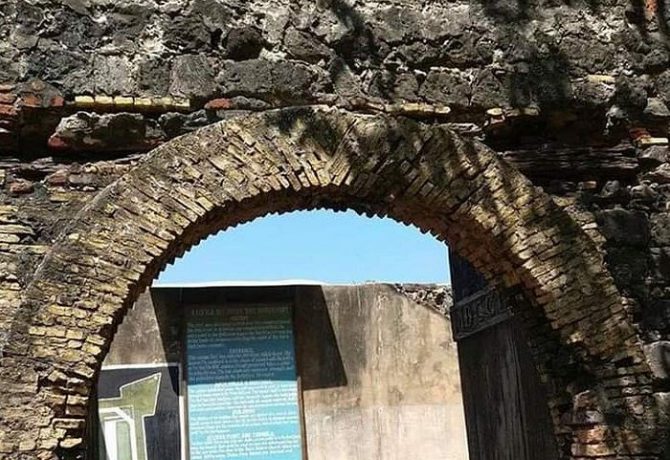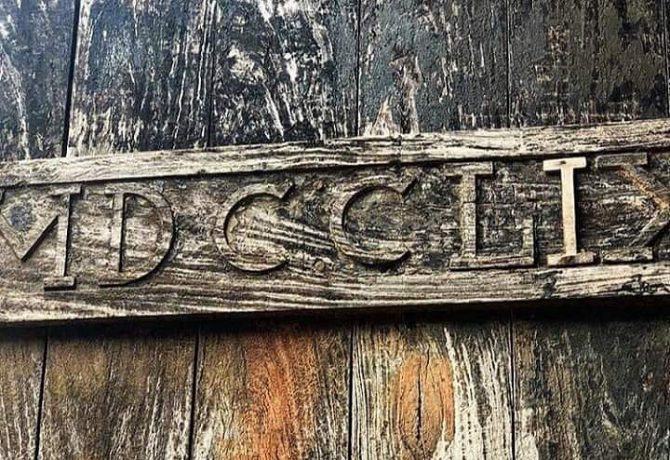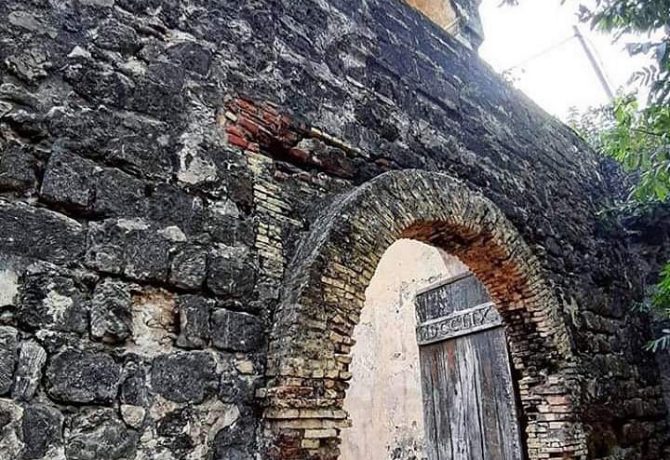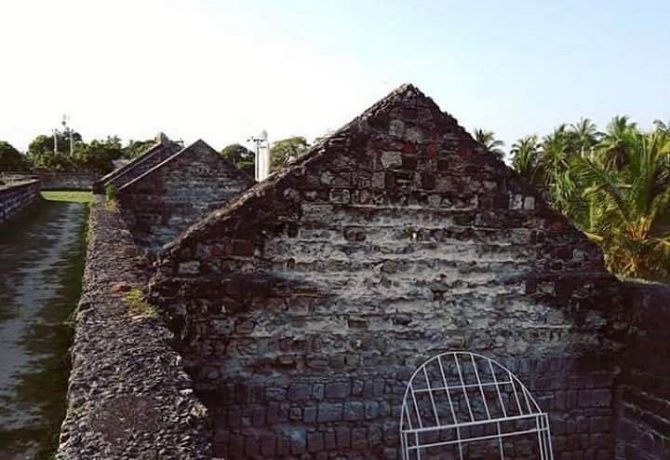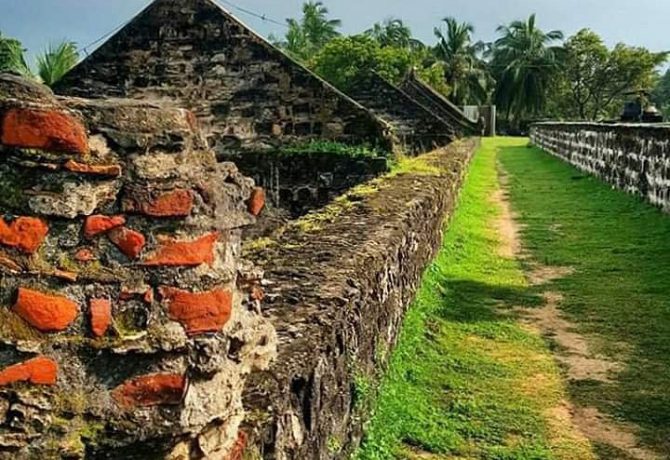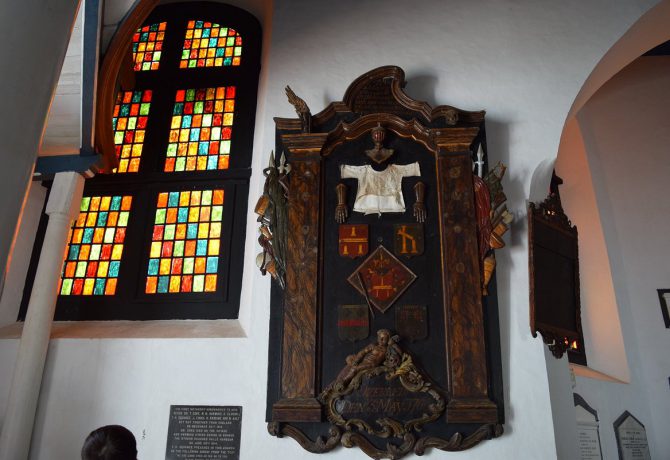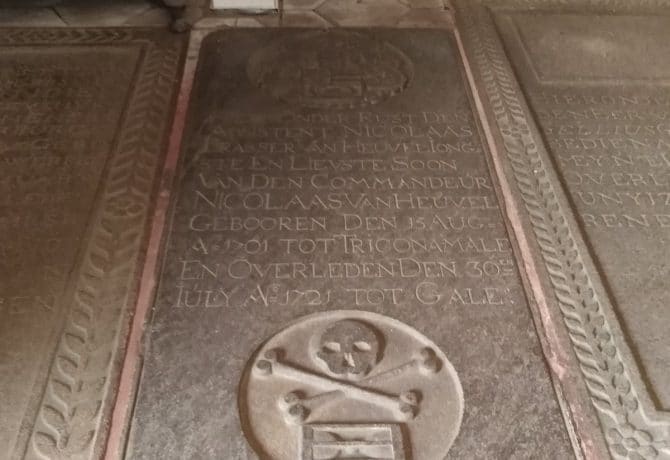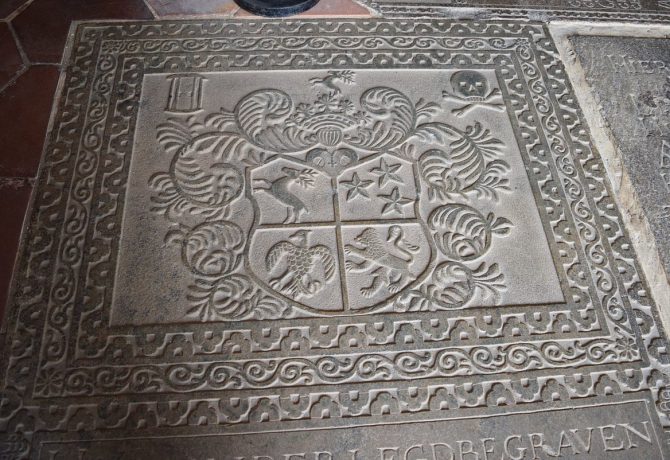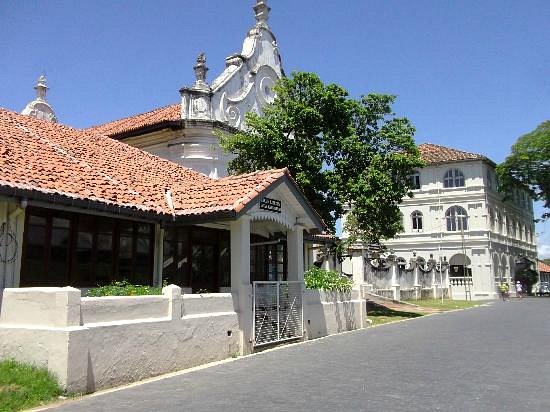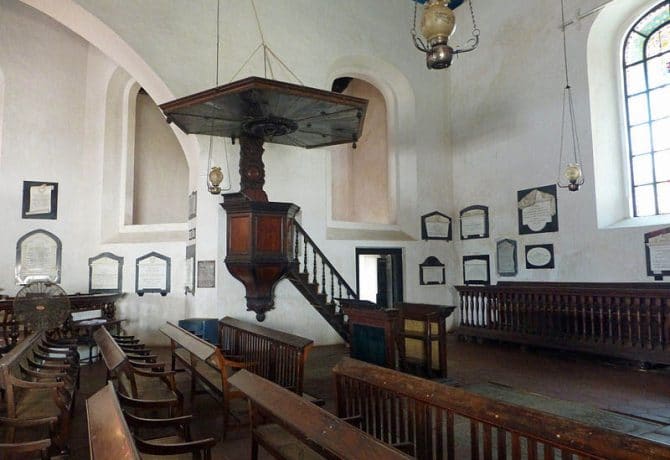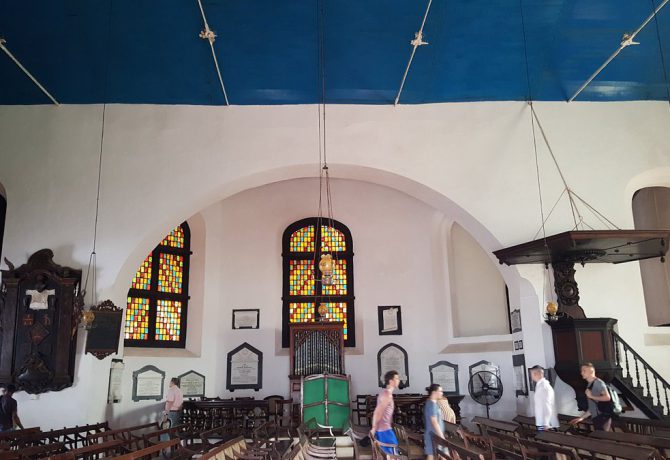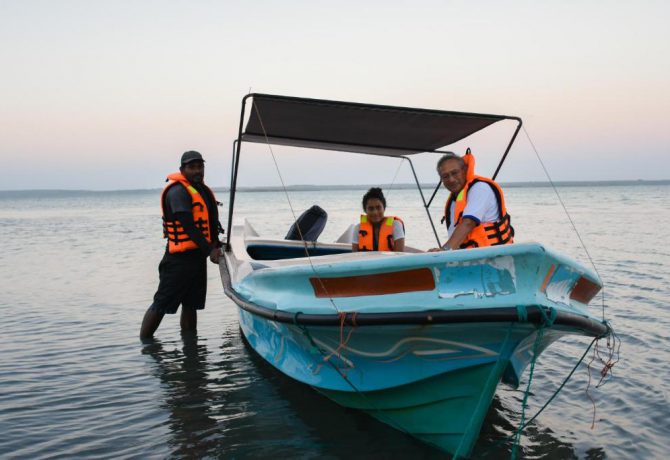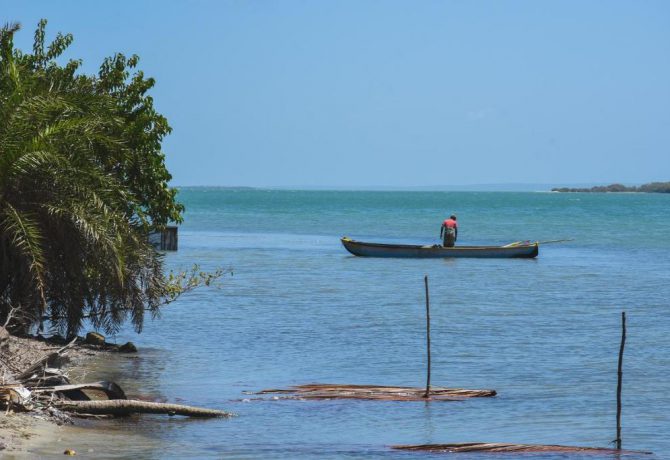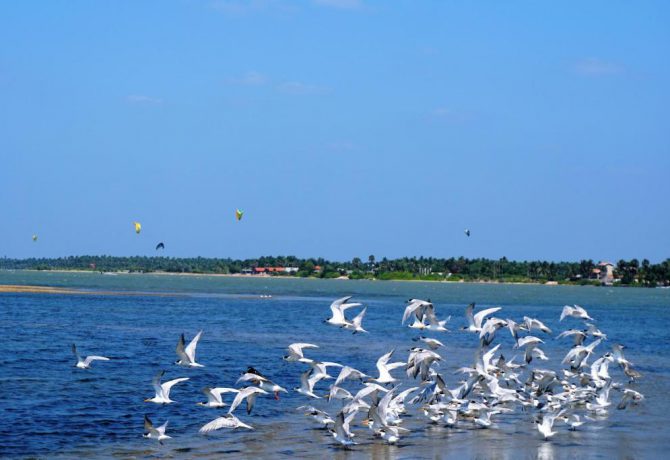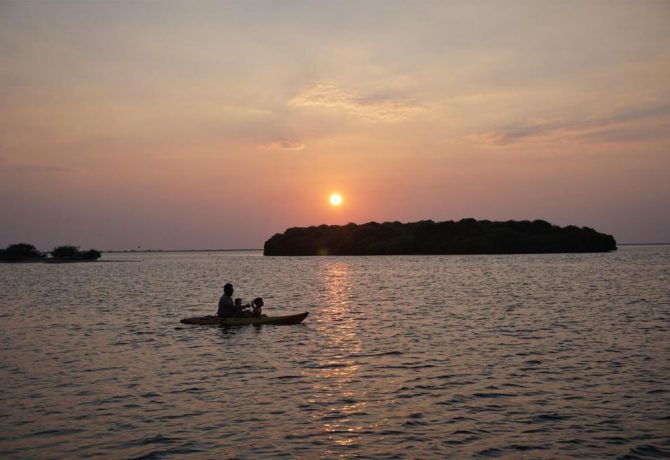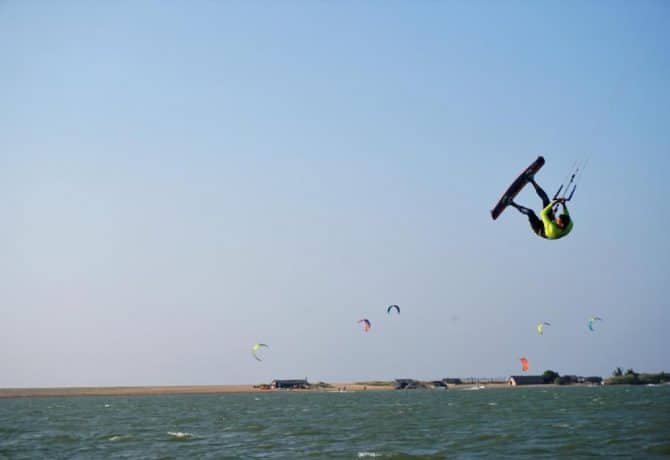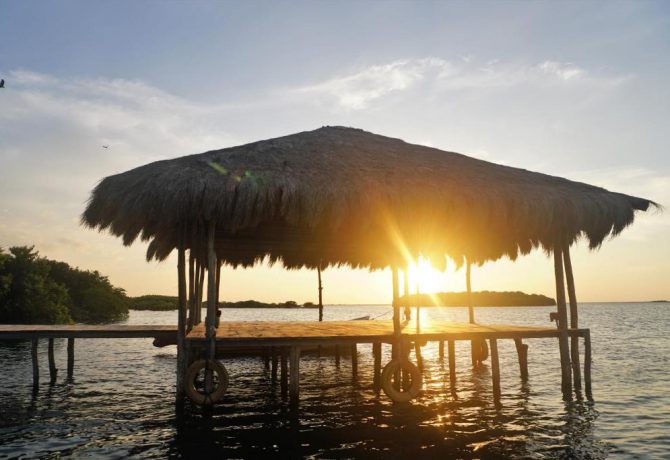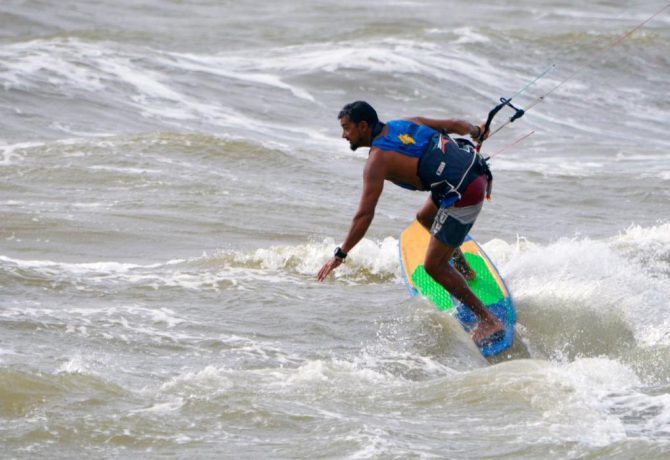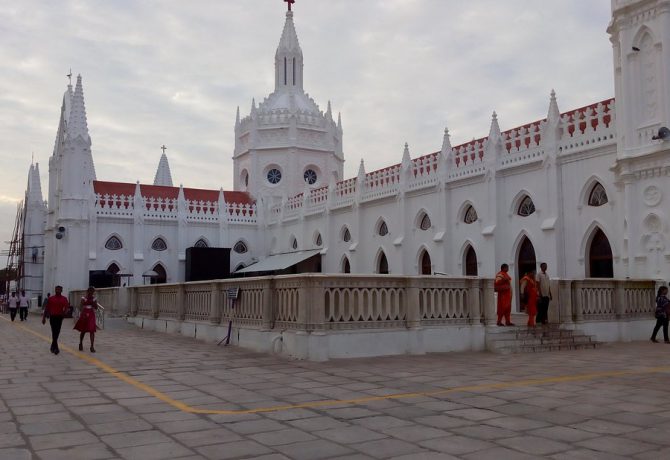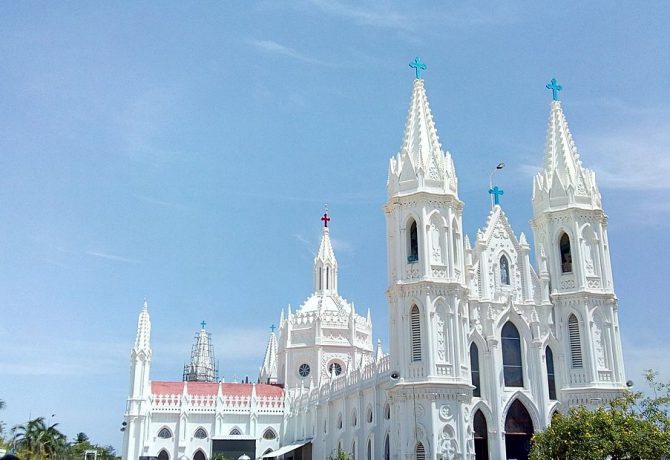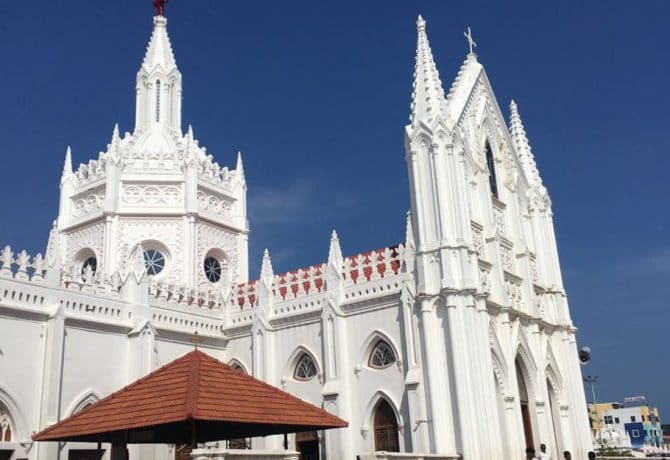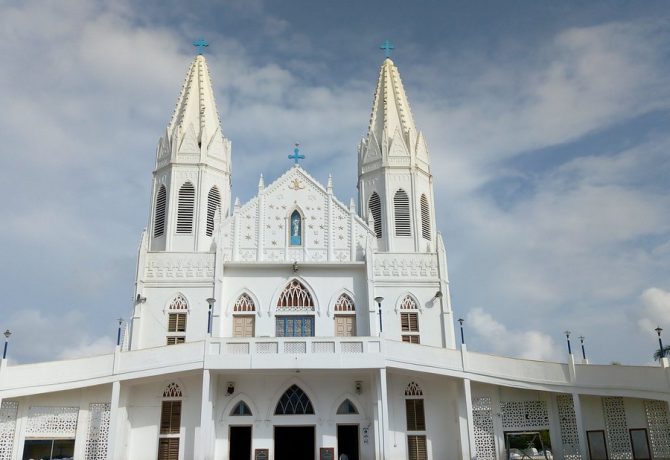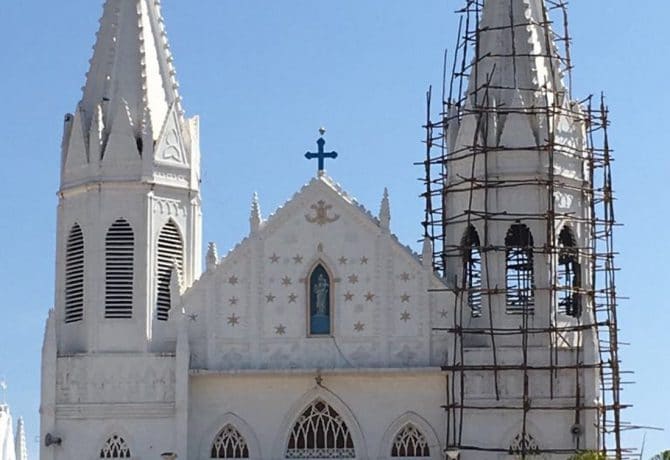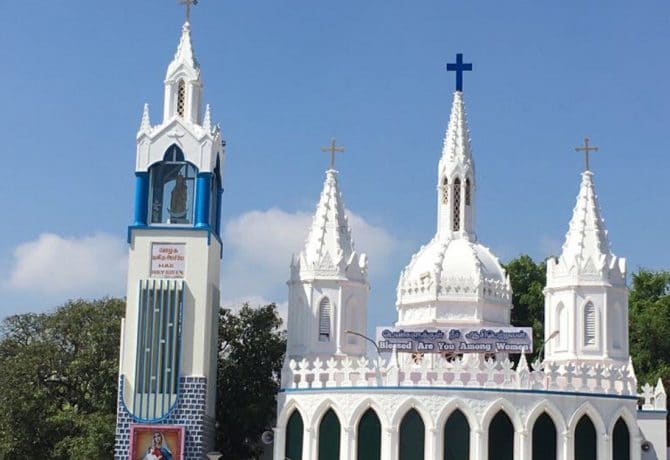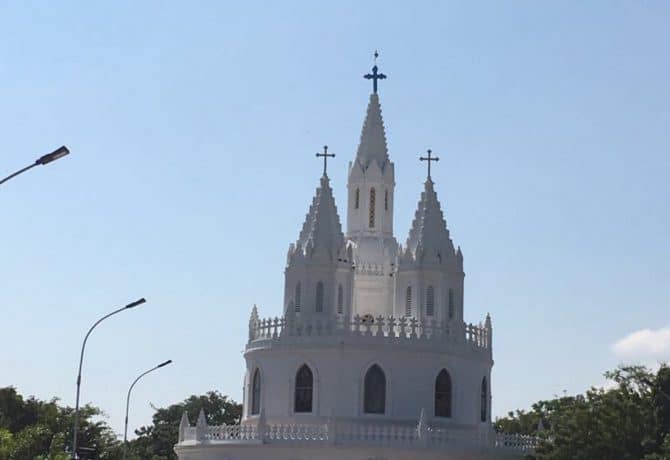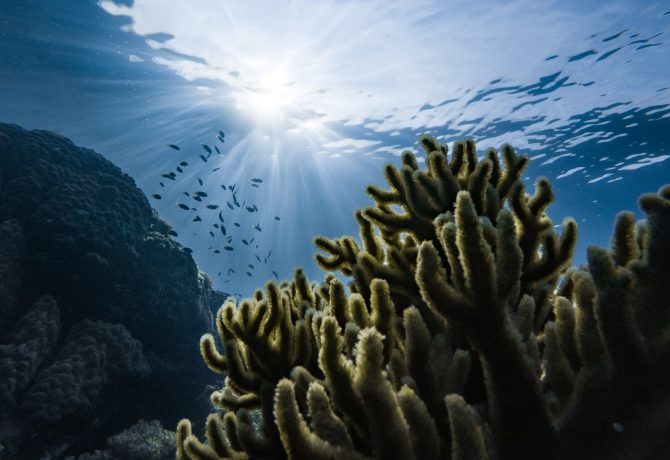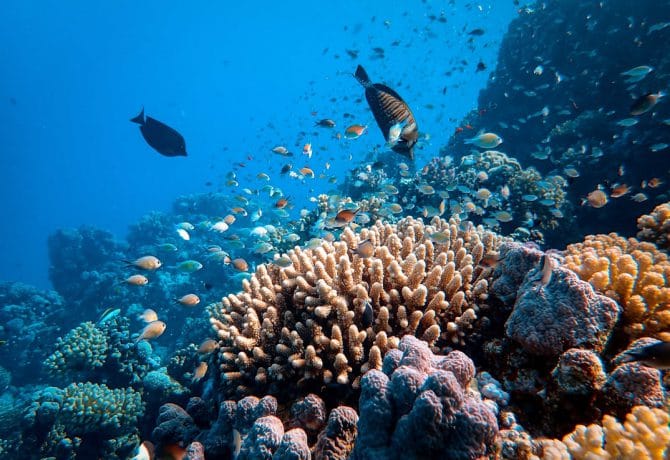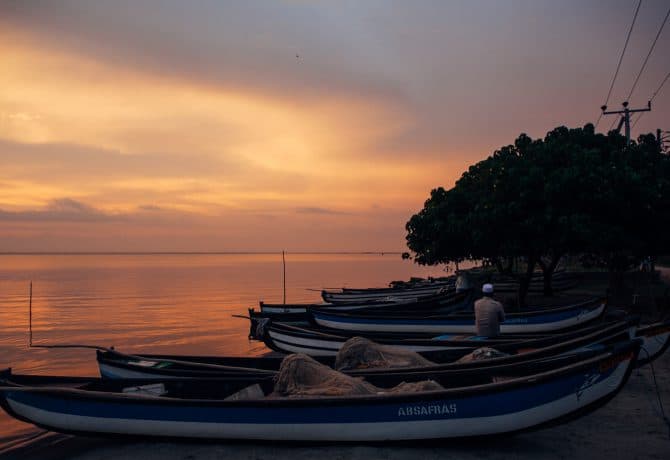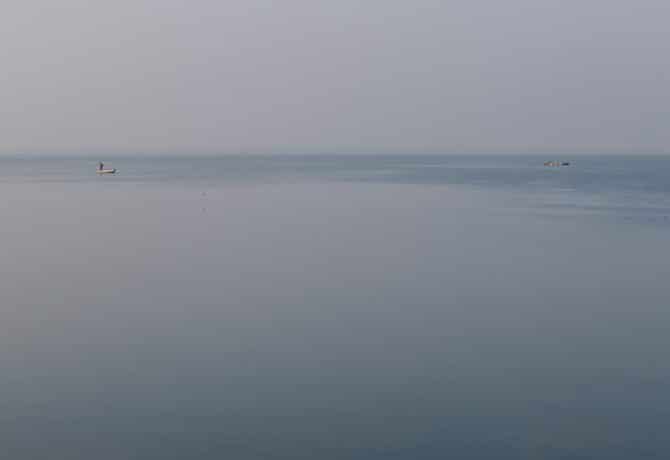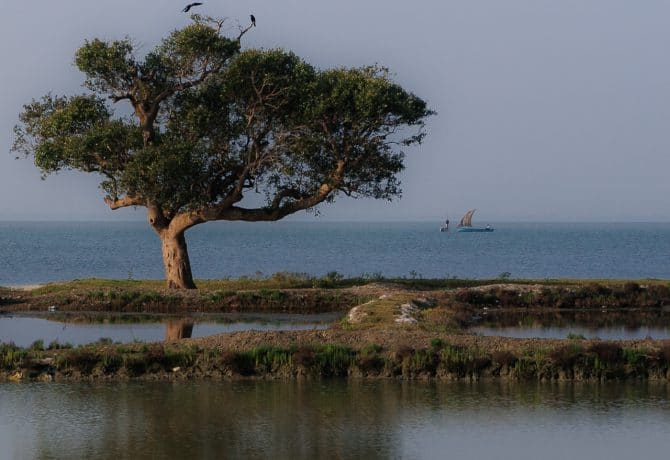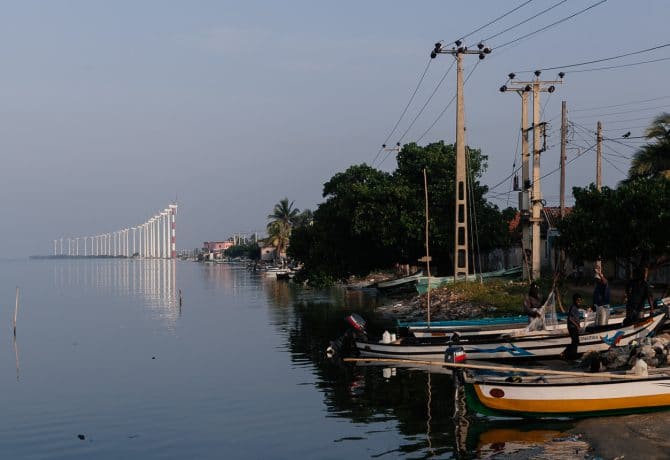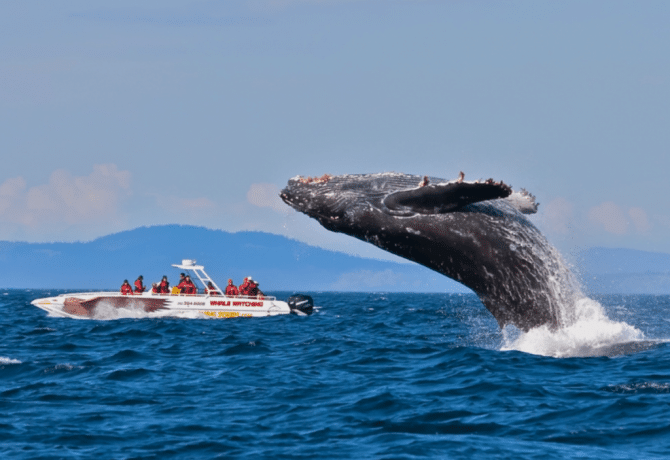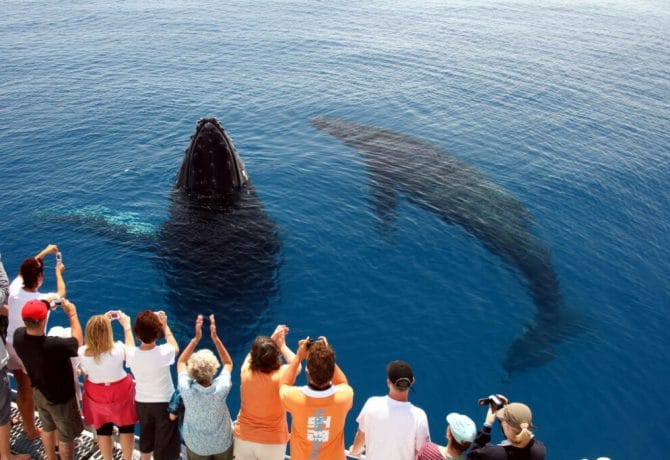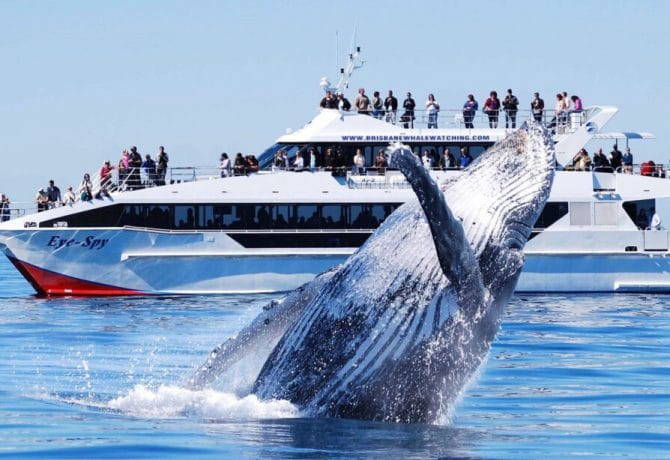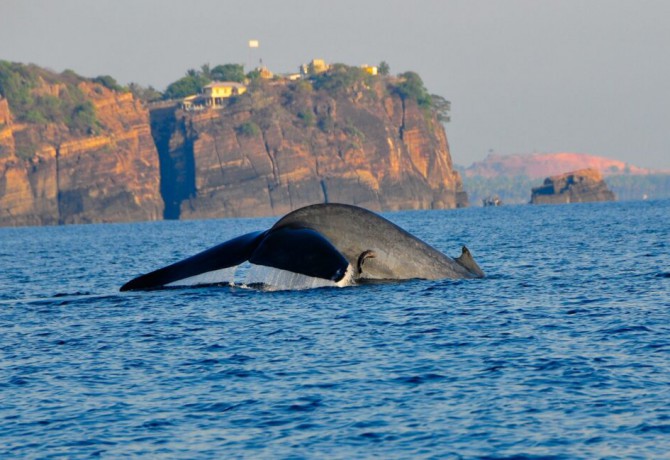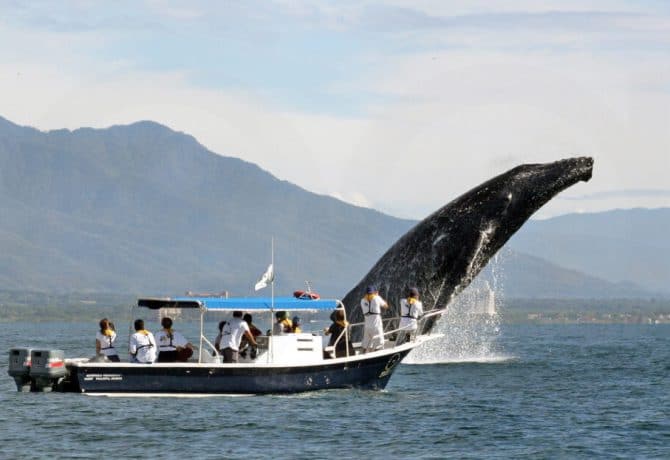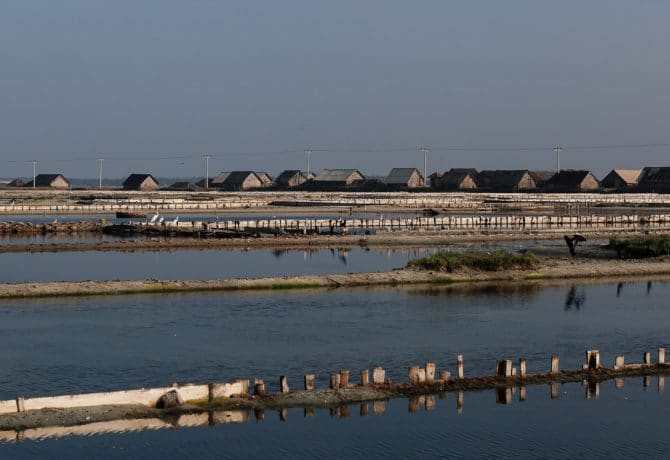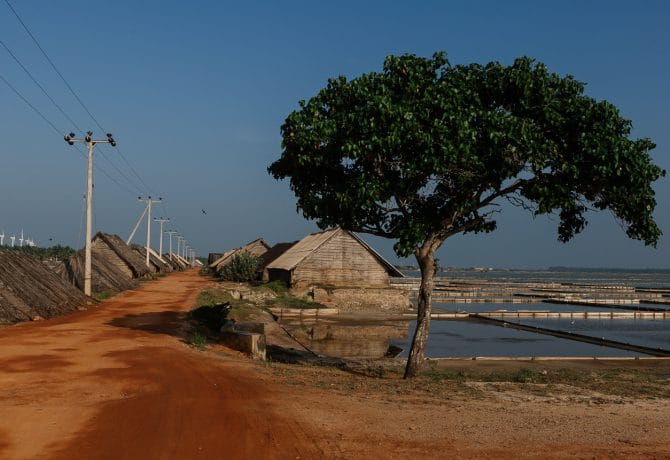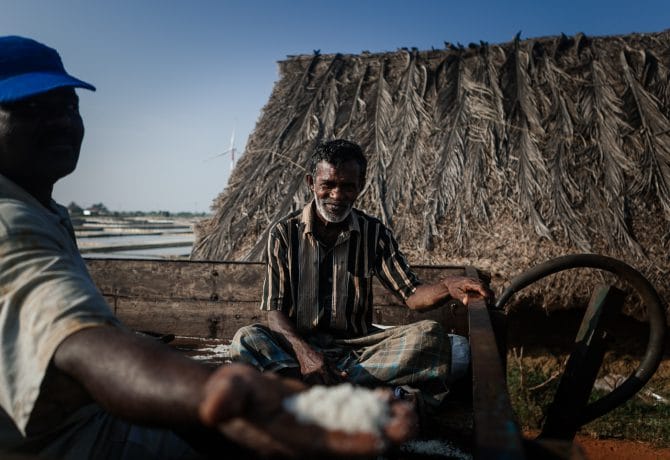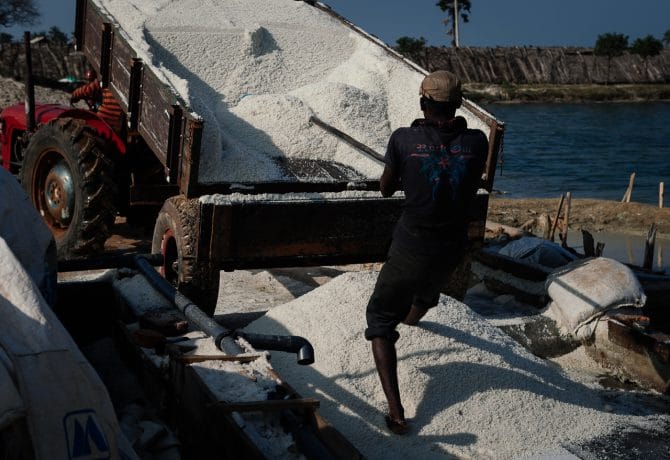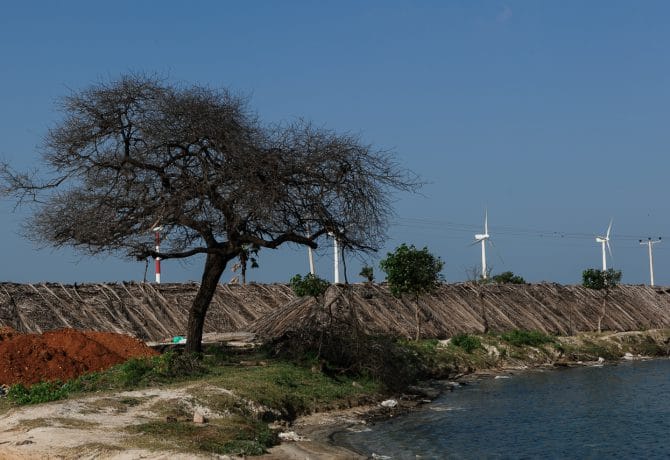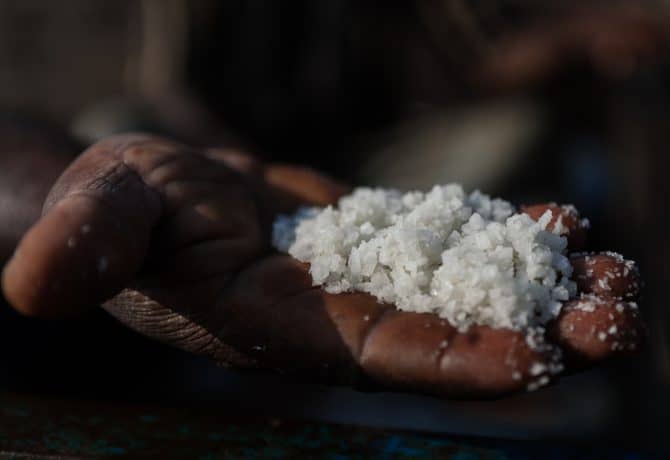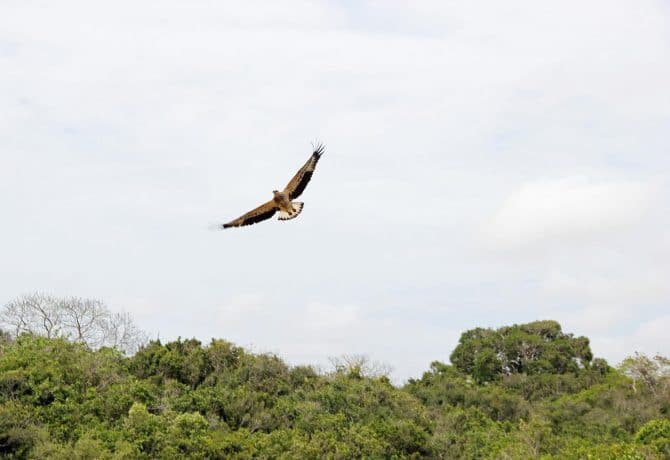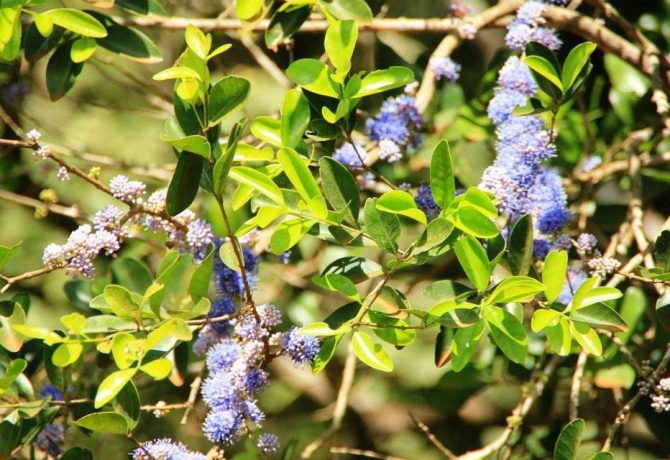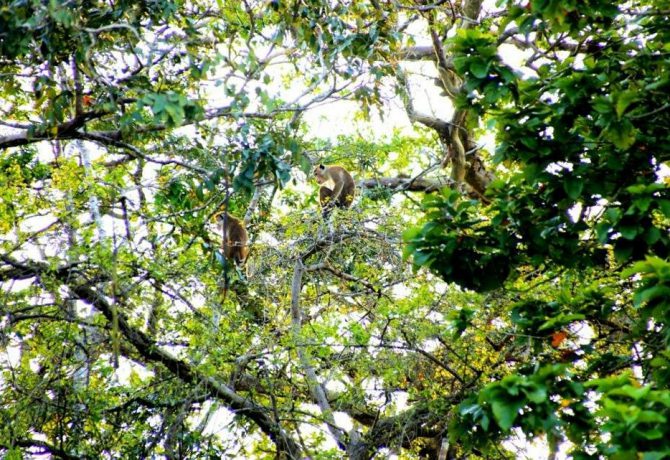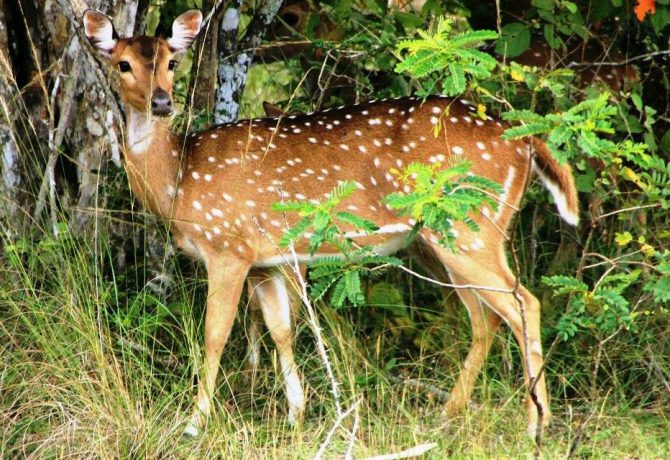Kalpitiya is located between the Indian Ocean and the lagoon, which includes 14 small islands spread over an area of 16 square kilometers. The area around Kalpitia is home to a diverse ecosystem, from underwater ocean reefs and mangroves to salt marshes and fresh water. Due to the presence of strong winds and lagoons, Kalpitiya is a place of attraction for windsurfing and kitesurfing lovers, for whom hotels create all conditions in this area.
Kalpitiya Dutch Fort
The fort was built by the Dutch in 1666 with the permission of King Rajasinghe II. However, King Rajasinghe II did not allow the Dutch to build a fort here.
The Dutch received permission from the king to build a mosque in this coastal area. They made sure to build this secret fort using only Jalaskirnmadi soldiers, and were smart enough not to bring anyone from Sri Lanka to the construction site. The Dutch also took care to hide this fortress from the rulers. With a cross and pillars, they designed it so that from the outside the fortress looked like a church.
Built of marble, limestone and coral using beeswax and limestone mortar, the fort is an example of Dutch architecture. Unfortunately, such walls of the fort can collapse very quickly if damaged. And the damage is getting bigger and bigger. Today, for this reason, Fort Kalpitiya is in a deplorable state.
The fort is located very close to the main town, the modern buildings built around it are well planned and adapted to the old Dutch architectural style, this helps Kalpitius to become a popular tourist city.
From May to August, a large number of tourists from all over the world visit Kalpitiya to take part in the kite launch. And the authorities began to take measures to preserve the magnificent heritage, including the fort, which is growing every day.
Dutch Church
This church is called differently – the ancient Dutch church or St. Peter’s Church. The church is located near the Dutch fort and is a seventeenth-century building. Despite the fact that the church is of Dutch origin, today it is more pronounced British architecture, since it was restored in the 40s of the XIX century by the British.
The British added a semicircular brick portico, Corinthian columns and capitals to the architecture, and also completed the reconstruction with three spires on the pediment.
Unfortunately, the roof of the porch later collapsed, but the bell tower still stands original. Its appearance is similar to the buildings found in Galle and Colombo. At the turn of several centuries, it was decided to move the bells from the bell tower along with all the church utensils to the Anglican church in Puttalam.
The church is well preserved and allows you to study the influence of different peoples on the architecture of Sri Lanka. For the convenience of movement, a tunnel has been built here that leads from the fort to the church.
Also in the vicinity of the church are still preserved:
- a pillar with several bells;
- ancient tombstones;
- several closed tombstones;
- a place for baptism;
- several sacred slabs with Tamil inscriptions and a coat of arms.
Like Fort Kalpitiya Dutch, the Dutch Church in Kalpitiya is a significant testament to Sri Lanka’s rich history and colonial past.
Пляж Kalpitiya Beach
Surrounded by a fishing community and almost untouched by the tourism industry (hotels are not represented here in large numbers), Kalpitiya Beach is one of the hidden gems of Sri Lanka.
The Kalpitiya region is essentially a marine reserve with habitats for various marine creatures. In the water near the beach of Kalpitiya live dolphins and rare species of sperm whales, which are the main attraction of the beach. The warm sand and tropical climate make Kalpitiya Beach an ideal place for sunbathing. In addition, you can take part in various other events:
- snorkel in the deep waters of the ocean to explore marine life;
- go boating and canoeing to explore the hidden wonders around the beach;
- enjoy a jeep ride along the sand dunes of the beach, admiring the breathtaking view of the sunset.
Reef Bar, a beautiful coral garden in the middle of the ocean offering the greatest biodiversity compared to other reefs in Sri Lanka, is also easy to reach.
In addition, Wilpattu National Park is just 60 km from the beach. This national park is home to many species of animals.
The best time to visit Kalpitiya Beach is during the dry months, preferably from October to May. This is a great time for water sports including kayaking, windsurfing, scuba diving, canoeing and so on. If you want to see dolphins and rare sperm whales, then you should visit the beach of Kalpitiya from December to mid-April, it is at this time that whales can be seen in the water.
If you are wondering where to stay while visiting the beach of Kalpitiya, then there is nothing to worry about, in Kalpitia there are hotels where you can have a great time, in large numbers.
Velankanni Church — Uchimunai
The Church of St. Annai Velankanni, located on the seashore near Kalpitiya in Puttalam County, is a church of great faith among Catholics. Dedicated to St. Anneah, this temple is also revered and loved by pagans.
According to legend, the ship with the statue of St. Anna sank off the coast of Talavil in the XVII century. Sailors could not abandon the statue and escape without it – it would be a great sin. Therefore, they, along with the statue, swam out to the nearest shore. After erecting the statue, they prayed and asked them for help.
When a group of Portuguese who remained here went to bed, the light from this statue shone, and Saint Annai appeared and instructed them to build a church on this site. Legend has it that the statue was placed in a small barn, which at first served as a church. The current church was built around 1873.
Bar reef Coral Reef Marine Reserve
When it comes to biodiversity, tropical evergreen forests are immediately introduced. But there are biodiversity zones in the ocean that are not inferior to land. Near Kalpitia there are several coral reefs with beautiful marine life and colorful fish. Some coral reefs have been declared protected areas by the government.
Bar Rif is a coral reef system off the coast of the Kalpitiya Peninsula in Sri Lanka. It has the highest biodiversity of all coral reefs in the surrounding waters and is one of the few intact coral reef systems in Sri Lanka. This reef complex is of great ecological, biological and aesthetic importance, as it is home to 156 species of coral and 283 species of fish.
Bar Rif was declared a marine reserve in 1992. For many years, Bar Reef was almost unguarded, and it was threatened by both natural enemies (starfish, coastal erosion and sediments) and human activities. In 1999, the Asian Development Bank (ADB) decided to fund the “Coastal Resource Management Project (CRMP)” in Sri Lanka to secure resources and address coastal erosion, pollution, unmanageable fishing, overexploitation of resources, and coastal poverty.
Today, Bar Rif has begun its natural restoration, so many places are closed to tourists. But still you can admire the marine ecosystem, in the safest places for corals.
Lagoon
The lagoon is especially known for its excellent weather conditions, ideal for kitesurfing and windsurfing; The wind in the area can vary, but it is generally believed to be suitable for water sports throughout the season.
The lagoon is huge, the water in it is usually standing, and the waves are small. In Kalpitia, near the lagoon, there is also a school with courses in kitesurfing and windsurfing. Kayaking can also be booked through the mangrove forests of the lagoon. Enterprising tourists can go kayaking.
To take advantage of the best weather for kiting, the Lagoon of Kalpitiya should be visited between April and October. If you also want to combine a visit to the lagoon with dolphin watching, it is best to come between November and April. And if you combine with the observation of sperm whales, local whales, then it is better to go to Kalpitia from December to April to increase your chances of seeing these graceful animals.
Several tours are also available in Kalpitia that take intrepid adventurers through the lagoon on a boat with guides who can point out the different species of birds and animals spotted in the area. There are also some historical sites that can be explored in the lagoon.
Whales watch
Kalpitiya is a popular spot for dolphin and whale watching in Sri Lanka. You can watch the swimming and diving dolphins that jump, rotate and launch fountains even on the beach of Kalpitiya. This is an amazing sight that will never be forgotten not only by a child, but also by any adult.
Also, sea dolphins can be seen in Kalpitia during a half-hour cruise, and in the lagoon dolphins can generally be seen at almost any time of the year.
But most often, local and foreign tourists flocking to Kalpitia are looking for dolphins on motorboats. Dolphins and whales sometimes swim up to or sail parallel to such boats. Despite the fact that tourist boats ply along the beach of Kalpitiya, on which you can watch dolphins and whales, it is recommended to choose a boat approved by the Navy, with a navy-approved protective vest.
The best time to watch dolphins is October-May. The best time for whale watching is February/March/April.
Salt fields (Salt marshes)
These salt fields are considered the most famous in Sri Lanka, along with the salt fields at Hambantota in the south of the island. The salt fields in Kalpitia are called Puttalam. This name comes from the Tamil word Upputtalam, which means “city of salt”.
The annual production of technical salt in Kalpitiya in Puttalam is between 20,000 and 25,000 tons and represents the majority of salt production in the entire country of Sri Lanka. The salt deposits, where you can see how workers extract salt, is located just a 15-minute drive from the famous beaches of Kalpitiya. Nearby there are also hotels in Kalpitiya.
The extracted salt is used not only in the food industry (it is only 6% of the total), but also in the water industry, the manufacture of medicines, plastic raw materials, paper products, glass, fertilizers, detergents, fabrics, ceramics production and much more.
Salt marshes and tidal shoals, where sea salt is mined, are coastal areas formed by ocean tides. As a rule, the salt fields here are protected from strong currents, and at high tide they go into the ocean water, and then at low tide the water evaporates, and the concentration of dissolved salts increases. As the moisture evaporates, pure salt appears at the bottom and along the edges of the salt field.
Wilpattu National Park
Although Wilpattu was first declared a wildlife sanctuary in 1905, it was not until February 1938 that the 13,500-hectare park was designated a national park. However, his story begins much earlier.
It is widely believed that the coastline of the reserve, especially Kudiramalai, a rocky promontory, was the landing site of the Indian prince Vijay in the 5th century BC. He married Princess Kuveni of Sri Lanka, and together they founded the Sinhalese race. The ruins of the Kuveni Palace are just one of the 68 archaeological sites in the National Park.
“Villa” and “pattu” are broadly translated as “Land of the Lakes”, and this is exactly what defines this beautiful reserve. Among the lowland forests, open shrubs and dense jungles are up to 60 lakes – natural shallow pools that collect rainwater. They expand and narrow depending on the time of year.
Vilpattu National Park is home to much of Sri Lanka’s wildlife. The inhabitants include:
- Sri Lankan leopard;
- Asian elephant;
- Sri Lankan sloth bear;
- spotted deer;
- crocodiles;
- mongooses;
- water buffaloes.
This national park has the best chance of watching leopards in Sri Lanka. This is despite the fact that this national park has a much less dense population of leopards than Yala National Park.
The park’s water features also make it one of Sri Lanka’s best bird watching spots – some of the endemics include:
- the Ceylon grey hornbill;
- Ceylon current;
- red-backed woodpecker.
Vilpattu National Park is a year-round wildlife safari destination. The most popular time to visit is the dry season from May to September and the beginning of October.
The Old Dutch Fort and St. Peter’s Church are examples of Sri Lanka’s rich colonial past history, and boat trips along the lagoon or jeep rides along the coastal dunes provide an opportunity to admire the incredible sunsets on Kalpitiya. All these attractions and entertainment attract tourists from all over the world. Do not worry about housing: in Kalpitia there are hotels of any comfort.


